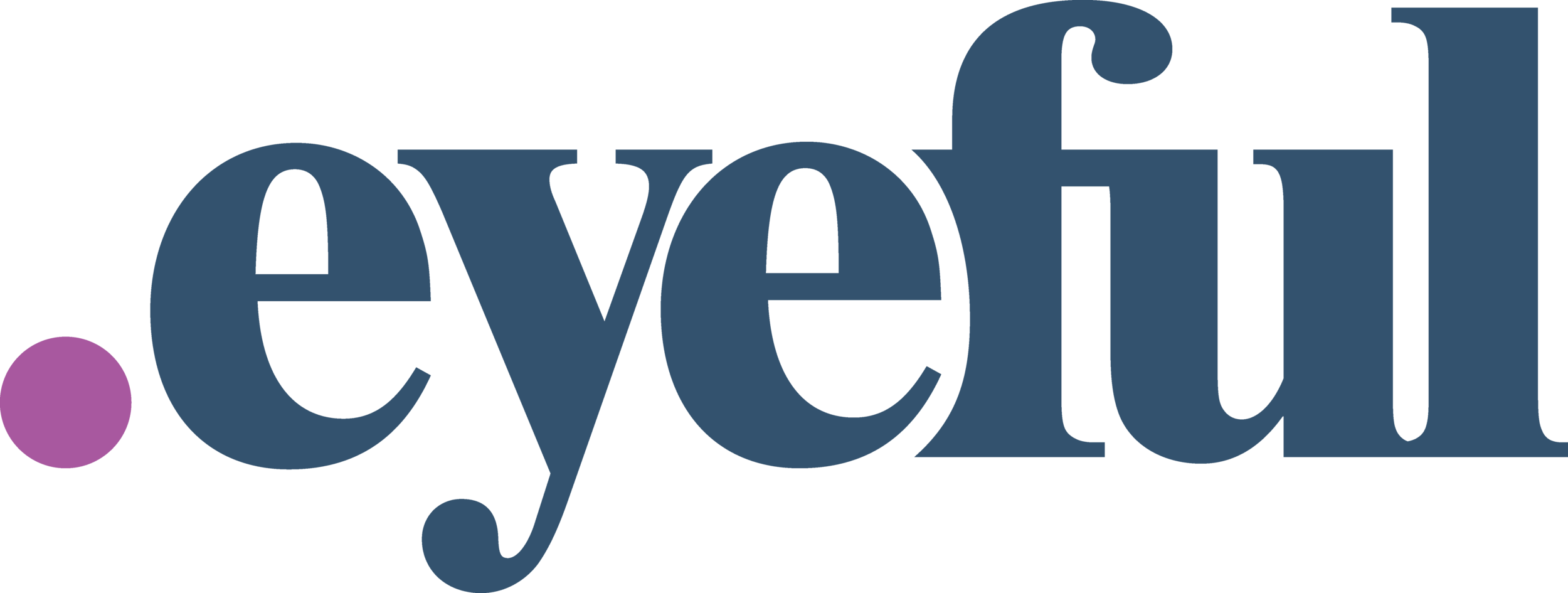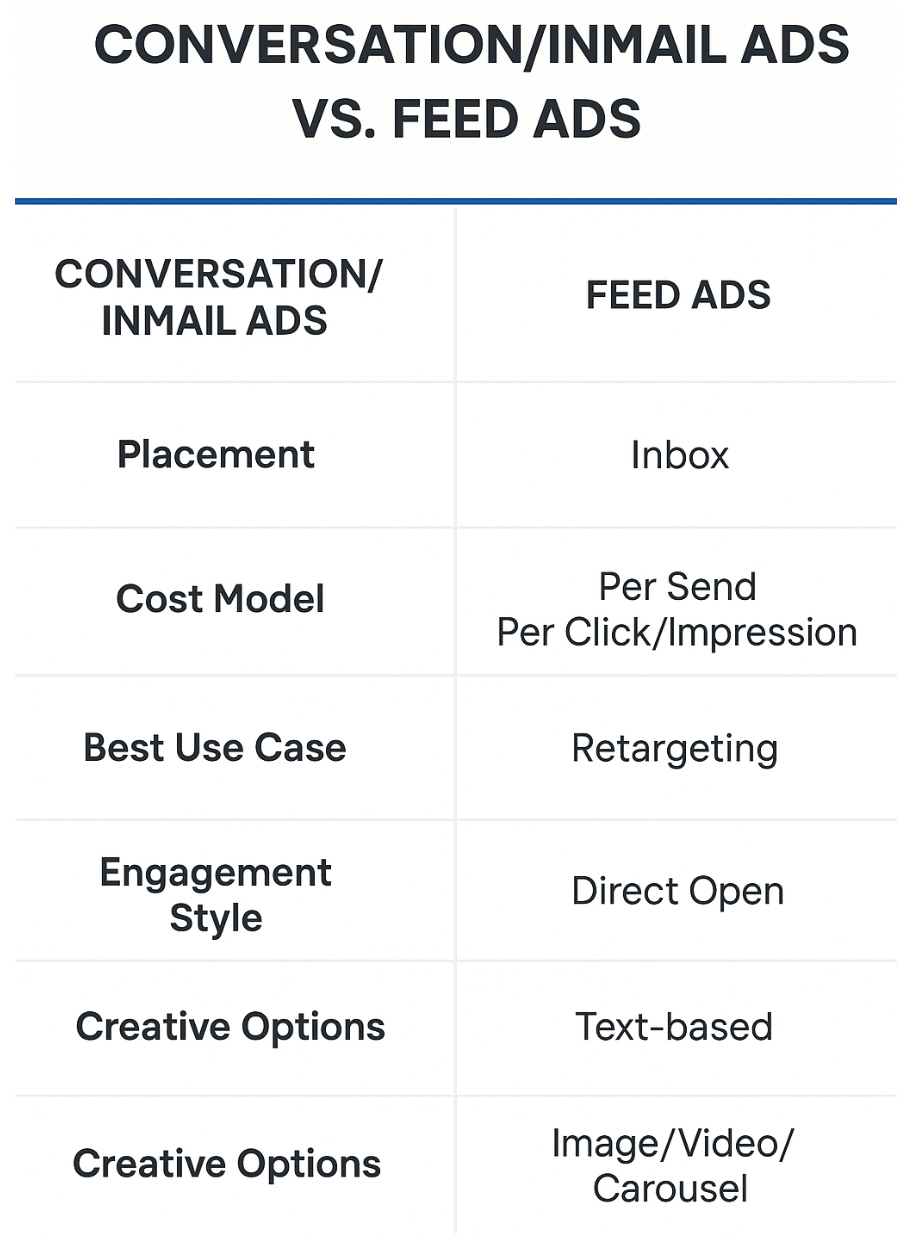LinkedIn Lead Gen: Conversation/InMail Ads or Feed Ads?
LinkedIn ads for lead generation often spark the same question: Are Conversation and InMail ads better than feed ads? The answer is that each plays a role. Conversation ads can be effective, particularly for lead capture, but they work best as part of a larger campaign. Below, we’ll explore how and when to use each format.
LinkedIn Ad Formats: The Basics
Conversation and InMail ads land directly in a user’s inbox. That kind of delivery stands out, but the way people engage with inbox ads is different from what you see in the feed. Open rates often look strong, but unless the offer is relevant, users might not take the next step.
Feed ads show up in the main LinkedIn scroll, where people are already active. This placement means the interaction seems more natural. You can also test images, videos, and carousels, which give you room to find out what resonates most. It’s been shown that adding elements like user tags or hashtags increases engagement rates, 15% and 6% respectively, on LinkedIn Posts.
-
They can outperform single-image ads when each card adds value, but results depend heavily on creative quality and audience relevance.
How Audiences Interact with Each Format
Audience behavior looks very different depending on the format. For example, one retargeting campaign we ran with Conversation ads reached a 52.69% open rate. On the surface, that number seems impressive, but opened emails don’t always turn into leads. The best results came when we paired inbox ads with other formats instead of running them alone.
Feed ads create a different kind of engagement. People are already scrolling, so clicks and views often carry more weight than open rates. In fact, LinkedIn ads overall deliver a 113% return on ad spend and now account for 39% of total B2B (Business-to-Business) advertising budgets. That makes LinkedIn the largest single platform for B2B ad spend.
When Conversation/InMail Ads Work Best
Conversation ads tend to shine when used for retargeting instead of as the first touch. In one campaign, we can use image and video ads to generate awareness, then follow with Conversation ads to the engaged audience. The results showed clear gains: cost per lead was $143, the lead form completion rate hit 59.76%, and open rates were 52.69% over seven months.
Another factor that lifts performance is the sender. Using a recognizable leader, such as a C-level executive, often draws more engagement than a sales rep. Research backs this up, as personalization strategies in LinkedIn ads outperform broad brand messaging, especially when career outcomes are part of the appeal.
Where Feed Ads Deliver Stronger Results
Feed ads typically work best when you want to reach more people and test different creative options. They appear in the main scroll, so they’re well-suited for creating awareness and scaling campaigns. You can quickly see what gets attention by trying out images, videos, or carousels.
They give you room to experiment with style as well. Research found that decision-makers are 40% more likely to consider a brand when its ads are seen as creative. Creative ads also keep people’s attention longer, with average view times lasting 24 seconds more than standard ads.
-
A solid starting point is $100 per day, but B2B campaigns often see better results with $3,000–$5,000 per month to allow for testing and optimization.
Cost Considerations for Each Ad Format
Conversation and InMail ads are charged per send, not per click. That means if you’re reaching a broad audience, costs climb quickly even if only a small share engages. For this reason, they’re generally more cost-effective when aimed at smaller, warmed-up audiences who already know your brand.
Feed ads work a bit differently. You can choose to pay per click or per impression, giving you more control over spend. If the creative performs well, the cost per lead is typically lower compared to inbox ads. For many brands, this makes feed ads a more flexible option when working with a paid social media advertising agency.
-
Related Article: Related Article: AI is Paving the Way for the Future of Paid Search
Explore how Eyeful blends tools like ChatGPT and Google Ads automation to enhance paid search strategy. Real examples and practical scripts show how AI can boost efficiency without losing the human touch.
Combining Formats for a Stronger LinkedIn Strategy
Usually, the best results come from layering different LinkedIn ads format options instead of choosing just one. A simple flow looks like this: begin with feed ads to create awareness, then follow with Conversation or InMail ads to retarget people who engaged. This mix makes the most of each format: feed ads for reach and discovery, and inbox ads for higher-intent conversions.
Partner with a Paid Social Media Advertising Agency
There isn’t one format that always wins for LinkedIn ads for lead generation. Feed ads are better when you want to scale and test creative options, while Conversation ads work best for retargeting warm audiences. Using both together often delivers the most consistent results.
Next Steps:
Define your campaign goal before choosing an ad format.
Test different creatives in feed ads to find what resonates.
Retarget engaged audiences with Conversation or InMail ads.
Track metrics beyond open rates and focus on cost per lead and form completions.
Get more from your LinkedIn ads. Partner with Eyeful, a paid social media advertising agency, to guide your next campaign.


